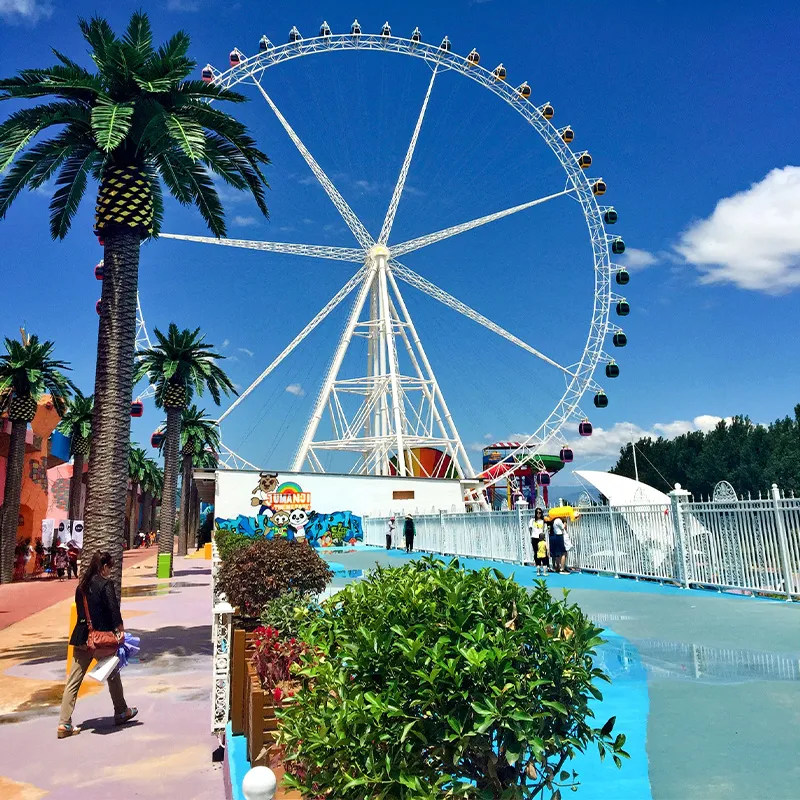- Albanian
- Arabic
- Belarusian
- Bengali
- Czech
- English
- French
- German
- Hebrew
- Hungarian
- Indonesian
- irish
- Italian
- Japanese
- kazakh
- Persian
- Russian
- Thai
- Uzbek
- Vietnamese
rollercoaster loop
The Thrilling World of Rollercoaster Loops
Roller coasters have been thrilling and captivating amusement park visitors for decades. Among the myriad of features that make them exhilarating, few elements are as iconic and adrenaline-pumping as the loop. The loop de loop, as it is commonly known, transforms a simple ride into a breathtaking adventure, providing a unique experience that stimulates emotions and creates lasting memories.
The physics behind a roller coaster loop is fascinating. To achieve that exhilarating feeling of weightlessness and the rush of acceleration, engineers must meticulously design the track and take into account gravitational forces, inertia, and centripetal force. As the coaster climbs to the top of a loop, it converts potential energy into kinetic energy. At the peak, riders experience a moment of weightlessness before gravity takes over and pulls them down through the loop at breakneck speeds. This interplay of forces is not just a feat of engineering; it is a dance of physics that culminates in sheer thrill.
The Thrilling World of Rollercoaster Loops
From a design perspective, the construction of roller coaster loops is a calculated process. Many modern coasters feature loops that are not perfectly circular but are instead designed as amorphous shapes, often referred to as clothoid loops. This ensures a smoother ride, reducing the abrupt forces that can lead to discomfort. Designers must consider rider safety, comfort, and the overall experience in their creations. Innovations in technology have also allowed for the development of inverted coasters, where riders hang below the track, adding another layer of excitement and challenge to the loop experience.
rollercoaster loop

Iconic roller coasters, such as the Corkscrew and The Smiler, have pushed the boundaries of loop design. The Corkscrew features multiple loops and inversions, while The Smiler, with its astounding 14 loops, offers one of the most complex looping experiences available today. As riders tackle these intricate designs, they are not just experiencing a rush of adrenaline but are also marveling at the creativity and ambition behind the engineering feats. These coasters serve as landmarks in amusement parks across the globe, drawing thrill-seekers from near and far.
Beyond the thrill and engineering marvel, roller coaster loops have a psychological aspect that adds to their allure. People are often drawn to the idea of conquering their fears. Strapping into a roller coaster, knowing that a loop is forthcoming, provides a sense of bravery and accomplishment once completed. The shareability of these experiences, often recorded on smartphones and shared on social media, allows riders to relive their adventures and inspire others to take the plunge themselves.
The roller coaster loop also symbolizes the highs and lows of life. Just as riders ascend towards the loop, they may face challenges and uncertainties, but the plunge down is a reminder that exhilaration and joy can follow those moments of tension. In many ways, roller coasters serve as a metaphor for living boldly, taking risks, and embracing the unpredictable journey life offers — a testament to human resilience and thrill-seeking spirit.
In an ever-evolving landscape of entertainment, roller coasters will continue to captivate audiences with their dynamic loops and thrilling designs. Whether it’s the rush of gravity or the intricacy of engineering, the loop stands as a signature feature that defines the essence of roller coaster rides. So, the next time you find yourself at an amusement park, remember to take a deep breath before diving into the loop — it’s not just a ride; it’s a journey full of excitement, anticipation, and a celebration of life’s thrilling uncertainties.
-
Flume Ride-Hebei Zhipao Amusement Equipment Manufacturing Co., Ltd.|Thrilling Water Attraction&Customizable DesignJul.30,2025
-
Flume Ride - Hebei Zhipao Amusement Equipment | Water Coaster, Thrilling DescentJul.30,2025
-
Flume Ride - Hebei Zhipao | Thrilling Water AttractionJul.30,2025
-
Flume Ride: Thrilling Water Attraction by Hebei Zhipao|Log Flume Manufacturers&Flume Ride DesignJul.30,2025
-
Flume Ride-Hebei Zhipao Amusement Equipment Manufacturing Co., Ltd.|Thrilling Water Coaster, Safe DesignJul.30,2025
-
Flume Ride-Hebei Zhipao Amusement Equipment Manufacturing Co., Ltd.|Thrilling Water Attraction, Safe DesignJul.30,2025
